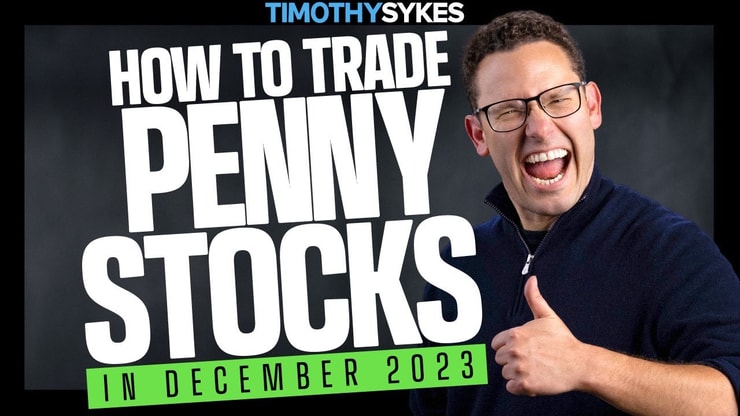What do stocks like Micro Algo (NASDAQ: MLGO)…
…Safety Shot (NASDAQ: SHOT)…
…and WEBUY Global (NASDAQ: WBUY) all have in common?
They’re all penny stocks that jumped over 100% in a single day.
And I traded all three of them.
I’ve been teaching about and trading penny stocks for over two decades.
Most people are afraid to touch penny stocks because they don’t know how to exit a trade.
And it’s costing them a chance to play great setups like these.
What these folks don’t realize is you don’t need to be exact on your entries and exits.
All you need to do is adhere to three key principles that tell you when and where to exit a trade.
To prove that point, I will not only tell you about those principles, but show you how they applied to some of my recent trades.
#1 – Follow the Price Action

2025 Millionaire Media, LLCPrice action is like having a personal 3D map of the market.
It tells you what’s happening right now based on not only where the price was, but how active it was.
I use this information to help me determine not just where buyers and sellers are stepping in, but how many there are.
Take my Monday trade in Innovative Eyewear (NASDAQ: LUCY).
I entered the trade using my Morning Panic Dip buy pattern.
Now, I want you to look at where I exited.
Notice how volume increased substantially. Yet, the price of the stock changed very little.
That tells me buyers are losing strength.
Why?
Because for all the transactions taking place, there are enough sellers to meet buyer orders at these prices.
If there weren’t, you’d see volume and price increase rapidly.
Quite simply, if volume increases and price goes nowhere, then whatever direction price was moving is probably going to stop if not reverse.
#2 – Reading History
I want to take this same trade and zoom out a bit.
I highlighted three times where price ran up to around $0.60 and got rejected.
Using this knowledge, it made a lot of sense for me to put my profit target at or near the same level.
Could the price bust through the 4th time?
Sure. But it also might not.
All I know for certain is that price is important. So, why not keep things simple and use it for my profit target?
When you combine that with the price action, it starts to make sense why the 4th time shares hit that $0.60 mark, volume was so high. I wasn’t the only one with this idea.
More Breaking News
- Pegasystems Surges: What’s Fueling the Rally?
- BioNTech Stock Surges: Is It Sustainable?
- Will Vertiv’s Rise Defy All Predictions?
And when you see the stock fall apart shortly afterward, it confirms my suspicions that buyers were losing their strength.
#3 Look at the Context

2025 Millionaire Media, LLCIn my experience, penny stocks are more likely to trade independently than other assets.
But they are still influenced by similar stocks.
As I watched LUCY trade, I also had my eye on Psithea Therapeutics (NASDAQ: KTTA), Assure Holdings (NASDAQ: IONM), and a handful of other popular penny stocks.
All of them failed to hold their gains.
By mid morning, every one of them was well of their highs, fading into the afternoon.
Compared to the last several weeks where stocks fired off multi-day runners one after another, these type of lackluster interest across the board tells me I need to be on guard.
It’s a sign that I need to tighten up my trades, reign in my risk, and look to close out the year on a high note.
So, instead of looking for the upper end of the usual 5%-10% I shoot for on my day trades, I’ll start to take exits at the lower end.
Far too many traders assume you just go for the same profit target every time.
Paying attention to the market you’re in is just as important as the stocks you choose to trade.
🚀 Discover the Power of AI in Trading: Join Our XGPT Live Training! 🚀
Navigating the volatile world of penny stocks can be a daunting task.
Like the trades with Micro Algo, Safety Shot, and WEBUY Global, the market is full of surprises.
Are you tired of missing out on 100% jumps because you’re unsure when to exit?
🧠 Learn the Three Key Principles of Exiting Trades – but with a twist. We’re integrating cutting-edge AI tools like XGPT to enhance these techniques.
🔍 Why Rely on Guesswork? With XGPT, you don’t have to. Understand price action, read historical patterns, and interpret market context in ways you never thought possible.
💡 See XGPT in Action: I’ll demonstrate live how XGPT can revolutionize your approach to penny stocks, using real examples from my own trades.
🌐 Be Part of the Future of Trading: This isn’t just about one or two successful trades. It’s about consistently making smarter decisions with the help of AI.
🚀 Ready to Transform Your Trading Strategy? Don’t let uncertainty hold you back. Embrace the AI revolution in trading and start making moves with confidence.
👉 CLICK HERE TO JOIN OUR XGPT LIVE TRAINING – Unlock the secrets to smarter, AI-assisted trading strategies. Your journey to becoming a savvy penny stock trader starts here! 👈











Leave a reply